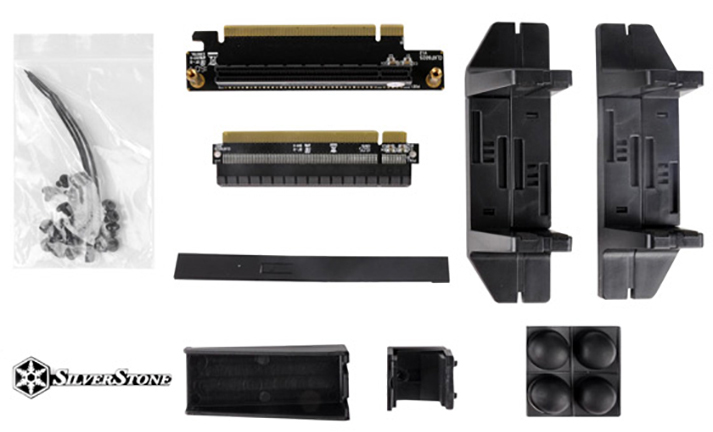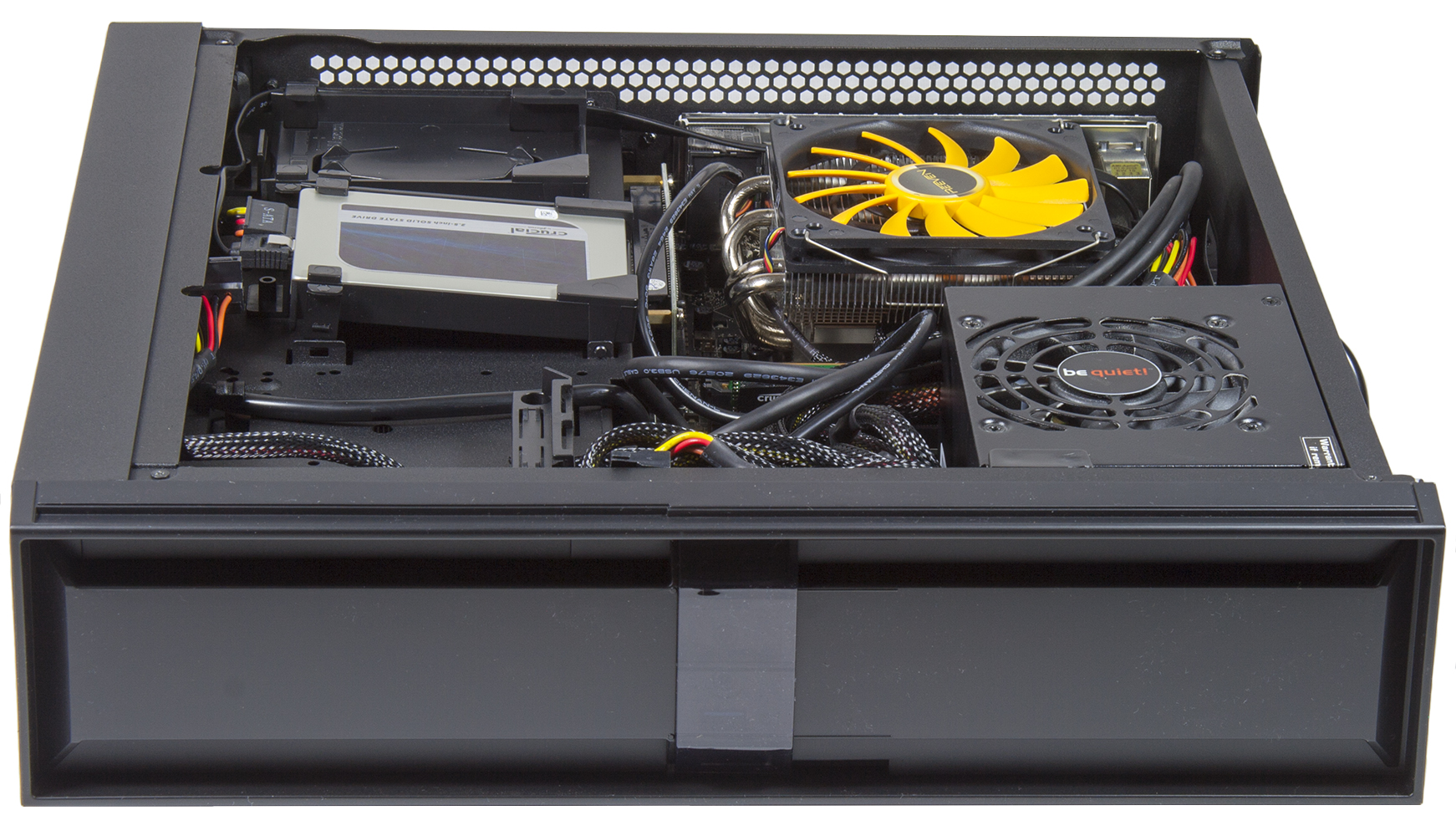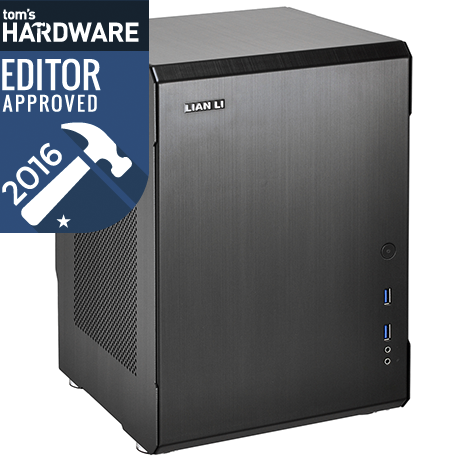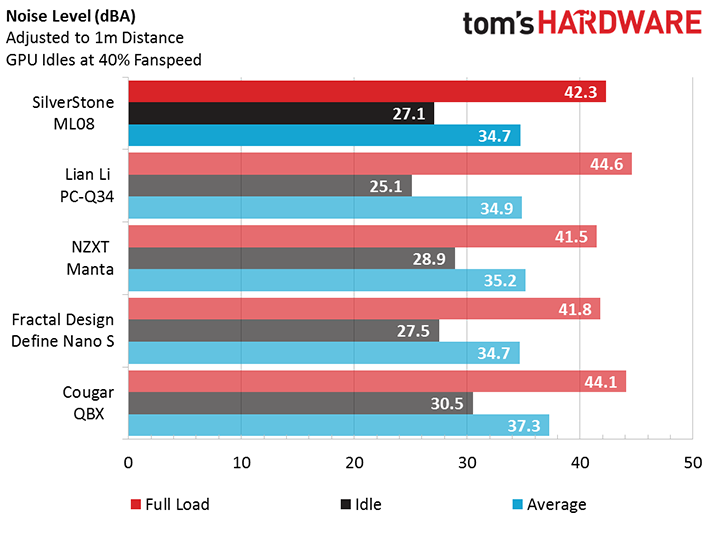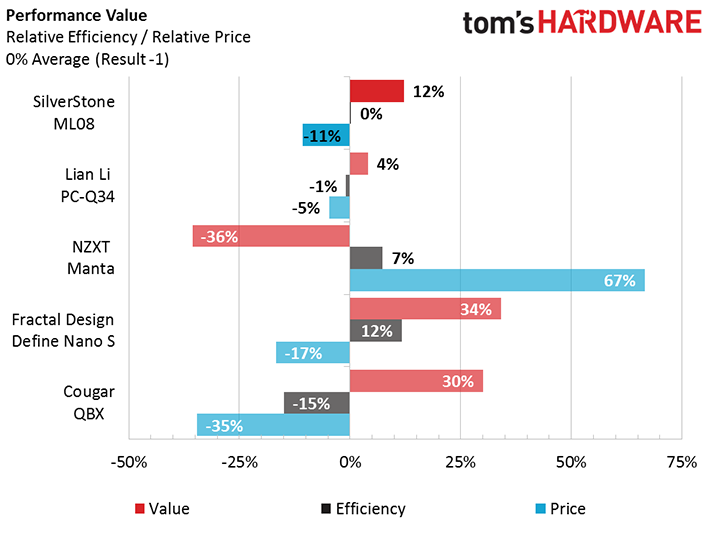SilverStone ML08 Mini ITX Slim Case Review
Borrowing most of its design from its Raven RVZ02, is Silverstone's Milo ML08 an optimal slim chassis choice for mini-ITX builders?
Why you can trust Tom's Hardware
Hardware Installation, Evaluation & Conclusion
The ML08 comes with a number of odds and ends including the standard packet of screws and zip ties, riser cards for the GPU, a pair of feet and a set of rubber cushions to stabilize the case depending on orientation, a face plate for an optical drive, two plastic spacers to support large GPUs, and a case badge with the company’s logo. Not pictured are the instruction manual and the handle.
The cable selection for this case is standard and includes an HD audio and USB 3.0 cable as well as the normal set of front panel power connections. One thing worth noting is the power LED cable isn’t split and won’t work on Asus boards without an adapter.
Aside from a relocated PSU and riser cards for the GPU, installation in the ML08 is mostly straightforward and follows the steps outlined in our How to Build a PC guide.
Here’s how the SilverStone ML08 compares to the other compact cases we’ve tested thus far:
Today’s review is based upon the same Mini-ITX reference platform as past reviews, except that our usual CPU cooler was too tall for this case. We swapped it out for the Reeven RC1001 Brontes, which is a close match in terms of thermal and noise performance.
Noise is measured .5m from the case's front corner, on the side that opens. The numbers are corrected to the 1m industry standard—used by many loudspeaker and fan manufacturers—by subtracting six decibels.
Additionally, the test duration for today’s review was four hours at full load, and the ambient air temperature for the test was maintained at approximately 26°C (78.8°F).
Get Tom's Hardware's best news and in-depth reviews, straight to your inbox.
Test System Components
| Test System Configuration | |
|---|---|
| Sound | Integrated HD Audio |
| Network | Integrated Gigabit Networking |
| Software | |
| Graphics | Nvidia GeForce 353.30 |
| Chipset | Intel INF 10.0.27 |
| Benchmark Configuration | |
|---|---|
| Prime95 v27.9 | 64-bit executable, Small FFTs, 4 threads |
| 3DMark 11 | Version: 1.0.3.0, Extreme Preset: Graphics Test 1, Looped |
| Real Temp 3.40 | Average of maximum core readings at full CPU load |
| Galaxy CM-140 SPL Meter | Tested at 1/2 m, corrected to 1 m (-6 dB), dBA weighting |
Test Results
CPU temperatures ran a bit hot, though it didn’t start out this way at the beginning of the test. It turns out that the ML08 took just over four hours of punishment to reach its final, stable temperature. That got us thinking that even with the oversized vents, the confined space, coupled with the lack of an exhaust fan, lead to a slow buildup of heat over time. In any case, the Reeven Brontes cooler we used is a bit small, even for a down-draft cooler, and you may get better results from other down-draft coolers that have larger fans.
Noise levels for the ML08 don’t look half-bad, with the case pretty much falling in line with the majority of the others we’ve tested. The design of the cooler we used plays a factor, but the rigid steel used to build the case and the well-placed vents do make a sizable contribution to noise reduction.
The low noise levels manage to offset the ML08’s higher temperatures enough to just barely put it in third place, with a razor-thin margin over Lian Li’s PC-Q34.
The ML08's $75 base price, coupled with its average performance, puts it solidly in third place in today’s comparison. We also suspect that the ML08 would likely make a jump to second place if it weren’t for the Cougar QBX’s rock bottom price tag, which helps keep that case towards the top of the rankings. Still, the ML08 is a great choice for builders who want an ultra-compact HTPC case with a robust (for its size) set of features, all without breaking the bank. Those willing to shell out another ten bucks also get a convenient carrying handle, which makes this case great for LAN parties and other events that require frequent transport.
Parting note: Those who want a bit more lively external appearance and can live without the handle might also consider SilverStone’s RAVEN RVZ02. Cost and design wise, it is almost identical to this case and therefore should perform the same, all while ditching the set-top box look.
MORE: Best Cases
MORE: All Case Content
MORE: In Pictures: 40 Unusual Computer Case Mods
- 1
- 2
Current page: Hardware Installation, Evaluation & Conclusion
Prev Page Introducing the SilverStone ML08-
dstarr3 There's no way you fit an NH-L12 in there. Even without the top fan. And clearly, the photo shows you didn't.Reply -
problematiq Reply19152624 said:There's no way you fit an NH-L12 in there. Even without the top fan. And clearly, the photo shows you didn't.
Not sure if they added this after your comment but, they mentioned they could not fit the NH-L12 and had to swap it for the Reeven RC1001 Brontes. -
cmiconi Indeed, I mentioned it in the text "Today’s review is based upon the same Mini-ITX reference platform as past reviews, except that our usual CPU cooler was too tall for this case. We swapped it out for the Reeven RC1001 Brontes, which is a close match in terms of thermal and noise performance."Reply
Though it seems I missed the reference to the NH-L12 in the parts table. We'll get that fixed here shortly. -
bak0n WAY to wide to fit in the tight computer desk spaces I'm looking at. Seems a bit complex in lay out as well. using a riser card for the dual graphics slot? That's just adding another point of potential failure and complexity.Reply -
zodiacfml this competes well with compact designs of ASUS or Gigabyte. I will choose this as I have the desire to build and the challenge to add an elegant solution for the exhaust fan.Reply -
Pompompaihn Riser cards aren't exactly a real common place to have failures....if you've ever worked with 1U rack servers before they ALL have riser cards for RAID controllers and such.Reply -
problematiq Reply19153927 said:Riser cards aren't exactly a real common place to have failures....if you've ever worked with 1U rack servers before they ALL have riser cards for RAID controllers and such.
same with 2U servers as well. -
itsmedatguy Now I'd just like to see this with a perforated plexiglass window over the GPU so I can sit it on my desk horizontally and still see dat beautiful ACX 3.0 glowReply
